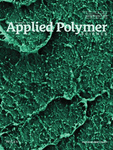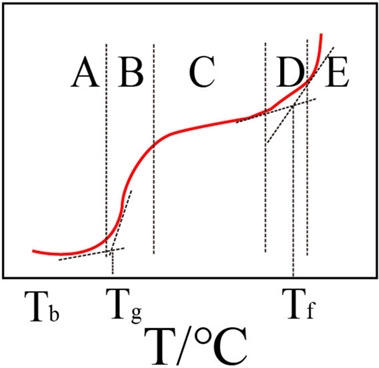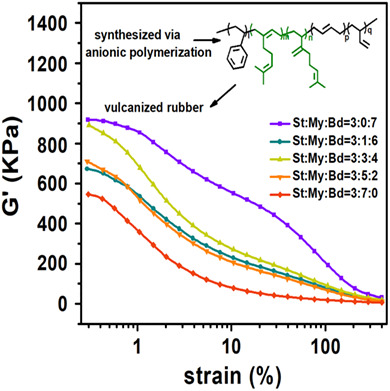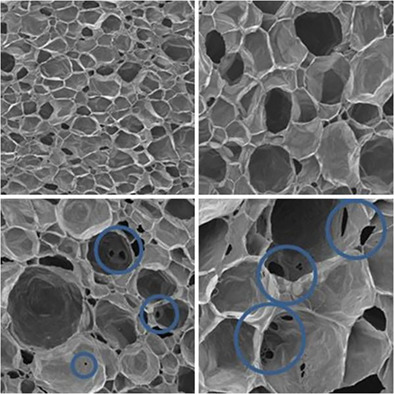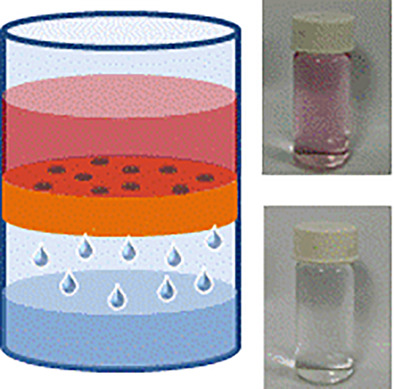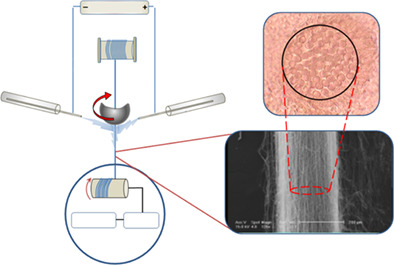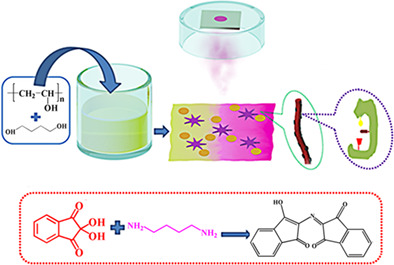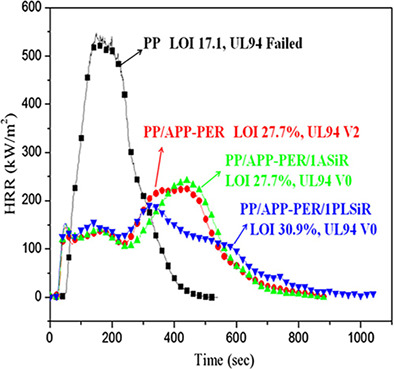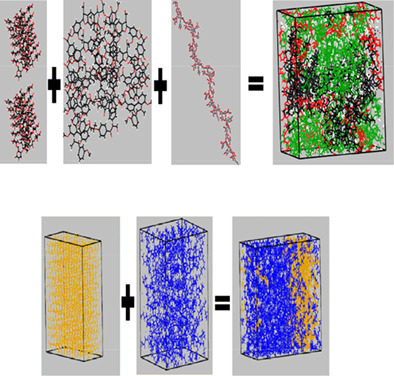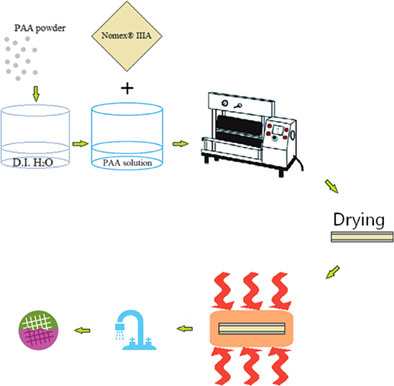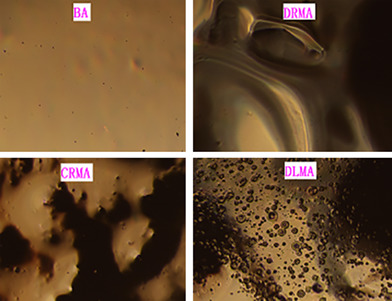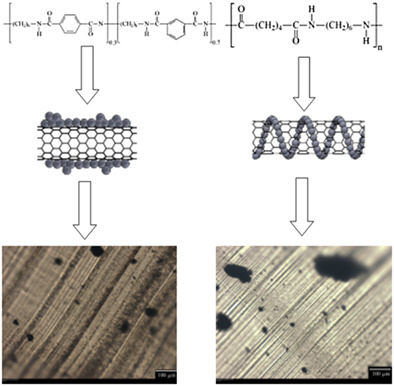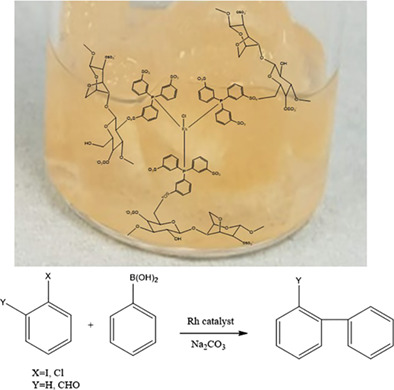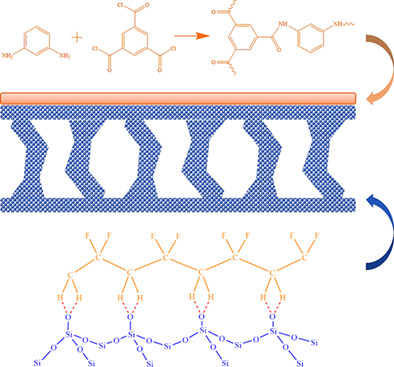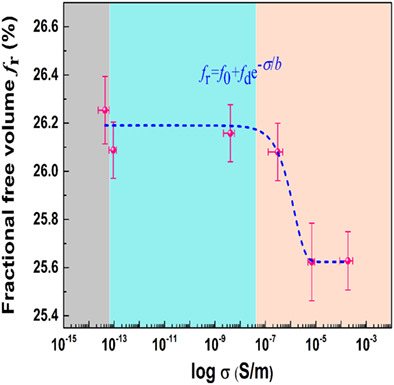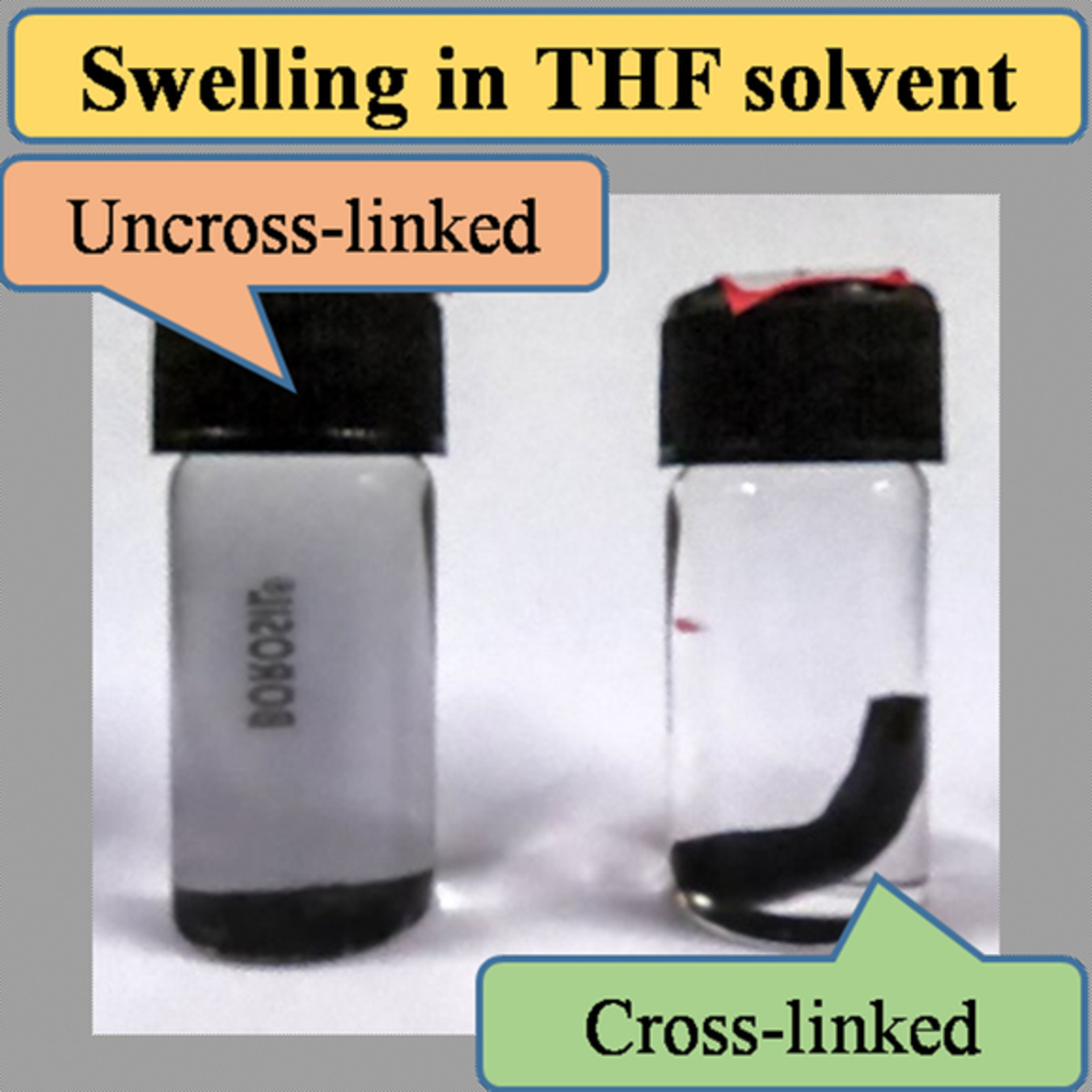Journal list menu
Export Citations
Download PDFs
Cover Image
Cover Image, Volume 136, Issue 45
- First Published: 19 August 2019
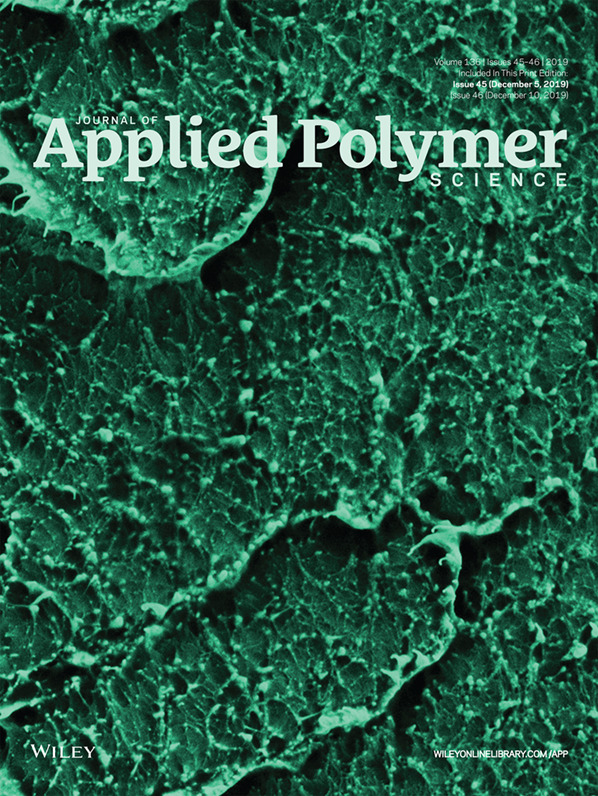
The current image by Svetlana Viktorovna Kononova, Denis Sapegin, and colleagues represents phase heterogeneity between sulfonated polyimide and poly(amide-imide) polymer phases in the composite film with 7:3 polyimide to poly(amide-imide) weight ratio. Most likely, in this composite, a three-dimensional crystallizing network of polyimide is formed around poly(amide-imide) which is to form an amorphous phase. This assumption was confirmed by the data of the energy-dispersive analysis since it is in the region of the network structure sulfur atoms were detected, which are present in this composite only in the structure of sulfonated polyimide. DOI: 10.1002/app.48197
Issue Information
Articles
Temperature effects on structural integrity of fiber-reinforced polymer matrix composites: A review
- First Published: 11 July 2019
Bio-based β-myrcene-modified solution-polymerized styrene–butadiene rubber for improving carbon black dispersion and wet skid resistance
- First Published: 22 June 2019
Crosslinked ethylene butyl acrylate copolymer foams with different cellular structure interconnectivity and tortuosity: Microstructure and physical properties
- First Published: 20 June 2019
Poly(vinylidene fluoride) membranes fabricated by vapor-induced phase separation (VIPS) for the adsorption removal of VB12 from aqueous solution
- First Published: 04 July 2019
Effect of β-nucleating agent and zeolite molecular sieves on supercritical CO2-assisted cell and crystal nucleation during the long-chain-branched polypropylene foaming
- First Published: 27 June 2019
Removal of molybdate and vanadate ions by a copolymer adsorbent in a ultrafiltration system
- First Published: 28 June 2019
Investigating the wicking behavior of micro/nanofibrous core-sheath PET–PAN yarn modified by dimethyl 5-sodium sulfoisophthalate
- First Published: 28 June 2019
Molecular imprint enhanced specific adsorption visualization on electrospun chromogenic membrane for efficient detection of putrescine
- First Published: 01 July 2019
Application of waste silicon rubber composite treated by N2 plasma in the flame-retardant polypropylene
- First Published: 28 June 2019
Predicting trends in structural and physical properties of a model polymer with embedded natural fibers: Viability of molecular dynamics studies for a bottom up design
- First Published: 02 July 2019
Analysis of the performance and mechanism of desulfurized rubber and low-density polyethylene compound-modified asphalt
- First Published: 02 July 2019
Role of π-π interactions and chain flexibility in dispersion and dynamic-mechanical properties of nanocomposites with multiple wall carbon nanotubes
- First Published: 08 July 2019
Preparation, structure, and pervaporation performance of poly(amide–imide)-sulfonated polyimide composites
- First Published: 08 July 2019
Polypropylene microfibers via solution electrospinning under ambient conditions
- First Published: 05 July 2019
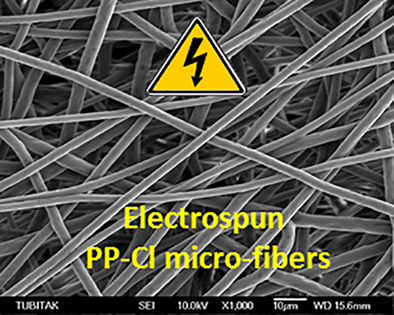
Chlorinated polypropylene (PP-Cl)-based microfibers are synthesized via simple solution electrospinning process under ambient conditions for the first time. Moreover, it has been reported the effect of solution concentration, feed rate, applied voltage, and tip-to-collector distance on the fabrication of electrospun PP-Cl microfibers. Their morphological, wetting, and thermal properties are investigated by scanning electron microscope, water contact angle, differential scanning calorimetry, and thermogravimetric analyses.
RhCl(TPPTS)3 supported on iota-carrageenan as recyclable catalysts for Suzuki cross-coupling
- First Published: 04 July 2019
Hydrophobic SiO2 nanoparticle-induced polyvinylidene fluoride crystal phase inversion to enhance permeability of thin film composite membrane
- First Published: 08 July 2019
Nanocomposite hollow fiber nanofiltration membranes: Fabrication, characterization, and pilot-scale evaluation for surface water treatment
- First Published: 05 July 2019
Free volume correlation with electrical conductivity of polycarbonate/reduced graphene oxide nanocomposites studied by positron annihilation lifetime spectroscopy
- First Published: 08 July 2019
Temperature-triggered three-dimensional network formation in graphene–polybutadiene nanocomposite
- First Published: 09 July 2019




